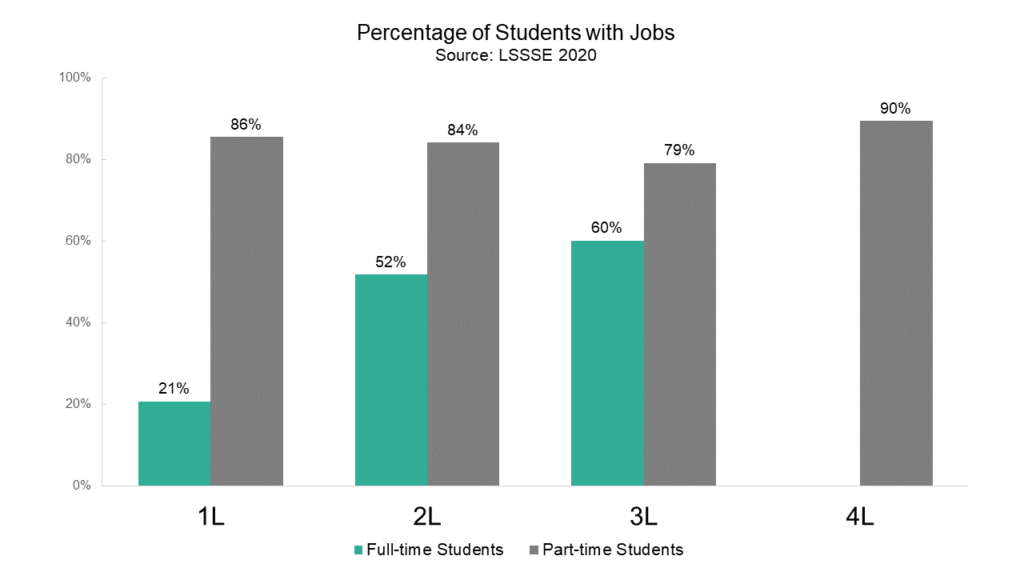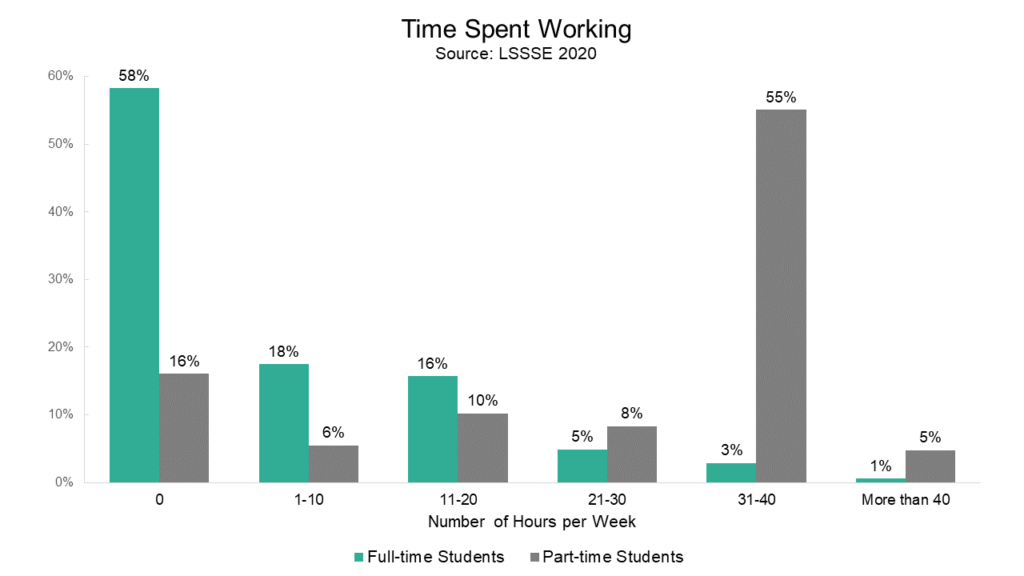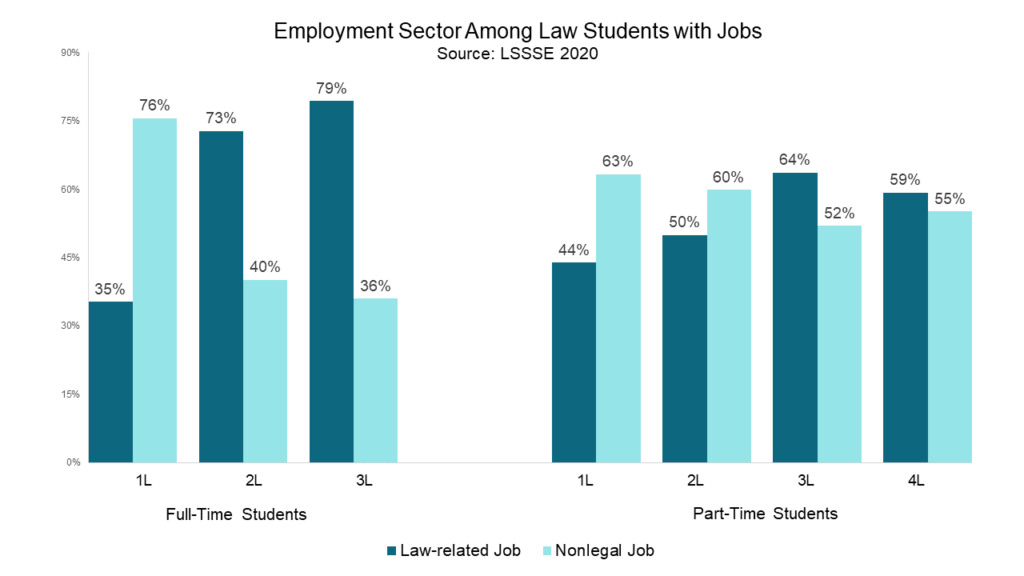In 2014, the American Bar Associated eliminated the standard that restricted full-time law students from working more than twenty hours per week. Certainly, studying law is an intense and demanding endeavor that may preclude having a job for many students. However, some students continue to work during law school for personal or economic reasons or to gain experience. Here, we look at trends in employment in the legal and non-legal sectors among both full-time and part-time law students.
The vast majority (84%) of part-time students have a job. Full-time students are obviously less likely to work for pay, although 42% of them had jobs in 2020. Breaking the analysis down by enrollment status and class, full-time 1L students are the least likely group to have a job, with a 21% employment rate. The proportion of employed full-time students increases significantly among 2L students (52% employed) and again among 3L students (60% employed). Interestingly, part-time 3L students were somewhat less likely to be employed than their 1L, 2L, and 4L counterparts.

Regardless of the ABA’s abolition of work hour limitations, the vast majority of full-time students continue to work twenty hours per week or fewer. Full-time students with jobs work an average of 14 hours per week. Only about 9% of full-time students work more than twenty hours per week, and only 4% have workloads that approach or exceed full time. Conversely, part-time students with jobs work an average of 32 hours per week. Most part-time students (60%) work approximately full time or more, which we characterize as 31+ hours of work per week.

As full-time students progress through their legal studies, they are more likely to work for pay. 2L and 3L students are also much more likely to have a law-related job than their 1L counterparts. Among full-time students who work for pay, only 35% of 1L students have a law-related job, compared to 73% of 2L students and 79% of 3L students. Part-time students are more equally split among law-related and non-legal jobs, although the proportion who work in a legal job increases as students move toward graduation. Forty-four percent of part-time 1L students who work are employed in a law-related job, compared to 59% of 4L students. (Note that the proportions in the figure below do not add up to 100% since employed students may work at both law-related and nonlegal jobs.)

Law school remains a demanding and time-consuming activity. Although the ABA no longer explicitly forbids working full-time while also attending law school full-time, it does not appear that many students are seizing the opportunity to work long hours. This seems abundantly logical given the amount of time that full-time students spend on studying and preparing for class each week. Part-time students are, of course, more likely to have time to work each week, and they are more likely than their full-time colleagues to work in the non-legal sector. This suggests that students are managing to find ways to earn money and gain work experience while also balancing the other demands on their time, and the way they do this is influenced by their enrollment status and the amount of time they have already spent in law school.
